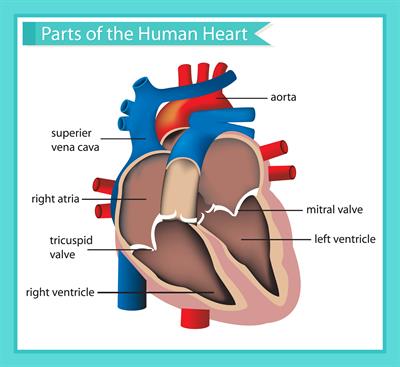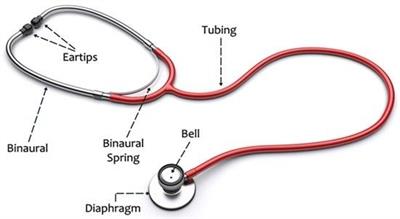PDF chapter test TRY NOW
The heart is an organ in our body which beats continuously to pump the blood in the blood vessels.
The heart is divided into four chambers so that the mixing of the oxygen-rich blood and carbon dioxide-rich blood is prevented. They are known as atria and ventricles.

The upper two chambers of the heart are known as atria, and the lower two chambers of the heart are known as ventricles. These two chambers are divided within themselves into two chambers with valves. Hence, there are four chambers in the heart. The right side of the heart contains carbon dioxide-rich blood, and the left side of the heart contains oxygen-rich blood.
The right atrium receives the carbon dioxide-rich blood from the body through a vein called Vena cava. The left ventricle pumps the oxygen-rich blood into the blood vessel called the aorta, which delivers the blood to the various body parts.
The right atrium receives the carbon dioxide-rich blood from the body through a vein called Vena cava. The left ventricle pumps the oxygen-rich blood into the blood vessel called the aorta, which delivers the blood to the various body parts.
Important!
Vena cava is the largest vein of our body, and the aorta is the largest artery of our body.
Heartbeat
The heart is a muscular organ as the walls of the chambers of the heart are made up of muscles that relax and contract continuously to pump blood. These rhythmic contractions that are followed by relaxations is known as a heartbeat. The heartbeat continues throughout the life.
The heartbeat of a person can be heard with the help of an instrument known as a stethoscope.

Stethoscope amplifies the sound of the heart beat. It consists of two earpieces, a tube that connects them to a chest piece comprising of a sensitive diaphragm. The doctors analyse the condition of the heart by listening through this instrument.
The rhythmic beating of the heart maintains the circulation of blood and the transport of substances to the various parts of the body.
Reference:
https://www.askiitians.com/revision-notes/class-7-science/transportation-in-animals-and-plants/#
